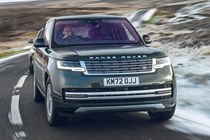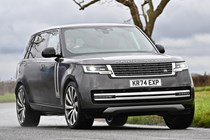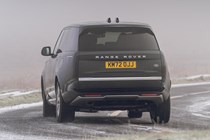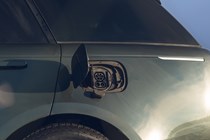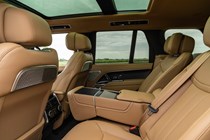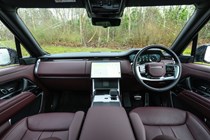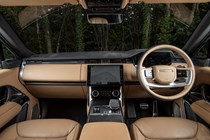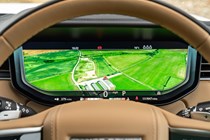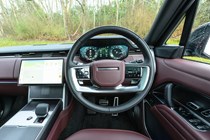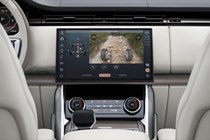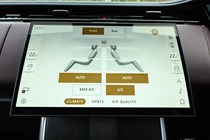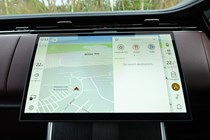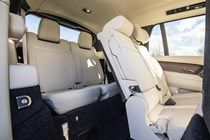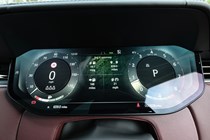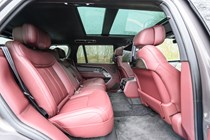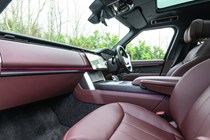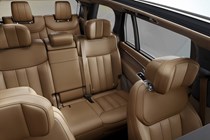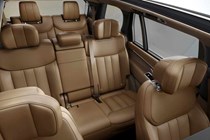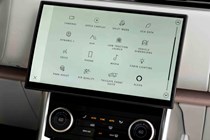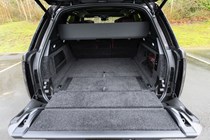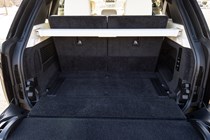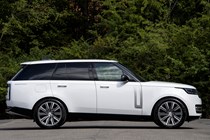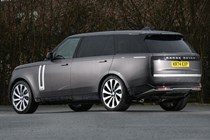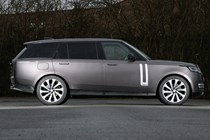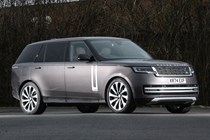
Range Rover engines, drive and performance
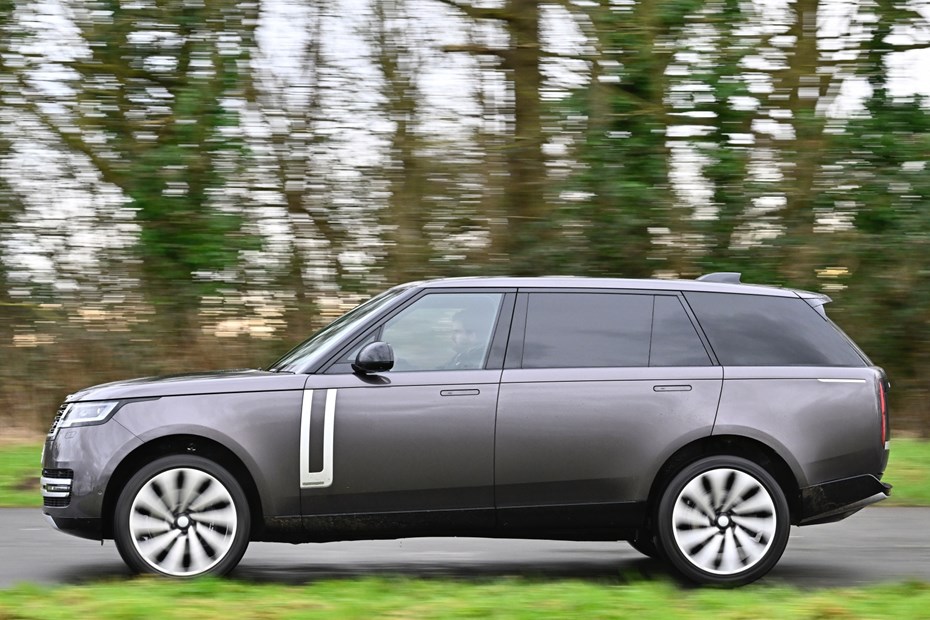
- Six powertrains to choose from
- Two petrols, two diesels, two plug-ins
- Excellent eight-speed automatic gearbox
Petrol engines
Land Rover has tweaked the engine lineup of this generation of Range Rover over the few years its been on sale. You can’t get a non-plug-in hybrid 3.0-litre straight six petrol anymore – but the pure petrol options are even more interesting They’re both immensely powerful 4.4-litre V8s.
The lesser of the two is badged P530 and, as its nameplate suggests, it develops a whopping 530hp. That’s enough to propel the Range Rover’s considerable bulk from 0–60mph in just 4.4 seconds. It can’t match the pace of lighter SUVs with similar firepower, yet it still feels properly quick. It sounds good, too, barking with a thunderous yet refined howl.
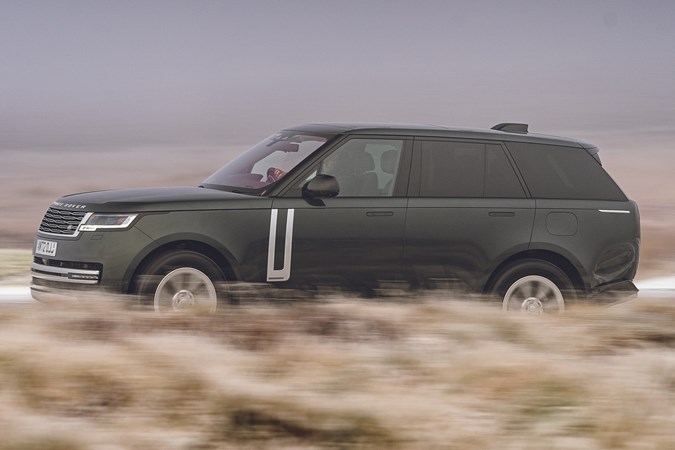
Above that, there’s the Range Rover SV. It has a more potent version of the same engine, serving up 615hp. Despite the considerable increase in power, acceleration from a standstill doesn’t improve much. You only gain an extra tenth of a second, although we’ll wait until we’ve driven it before passing judgement.
All models, regardless of fuel type, are four-wheel drive and come with an eight-speed gearbox. You also get a low-range transfer ‘box for effective off-road ability, along with all Land Rover’s off-road technology, such as dynamic air suspension, Terrain Response 2, and a 900mm wading depth. This ability might not be a priority for many Range Rover drivers, but it’s still an important part of the car’s DNA.
Diesel engines
Diesel is still an important option for Range Rover drivers – and there are two options to choose from. They’re both based on the same mild hybrid 3.0-litre straight-six unit, but they have different states of tune. Land Rover badges its engines D300 and D350, and there are no prizes for guessing how much power the two engines produce.
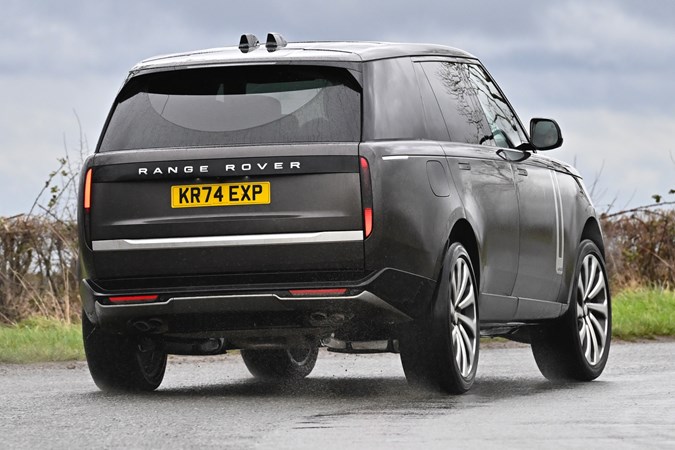
Both options are whisper quiet, beating Audi, BMW and Mercedes for noise and smoothness. They don’t ‘chatter’ at idle like an old Range Rover and they both pull strongly from low revs. We rarely felt the need to extend the engine to the redline or use Dynamic mode to wake up the automatic transmission. In many ways, this is the optimum Range Rover for those who travel long distances – and it’s the pick of the range for those who want to use their car for towing.
The D350 suits the car down to the ground. It’s barely any slower than the old petrol straight-six on real roads, it’s very civilised for a diesel and gives the car a wonderfully laidback character. That it’s also more cost-effective both to buy and to run just adds to the appeal and makes it an easy favourite for us.
Hybrid engines
Land Rover sells the Range Rover with two plug-in hybrid systems – and it markets them both ‘electric hybrid,’ highlighting their focus on EV power. Both have a maximum electric range of more than 70 miles. Keep them charged up, use that electric power as often as possible and you’ll hardly ever need to use any fuel on your daily commute.
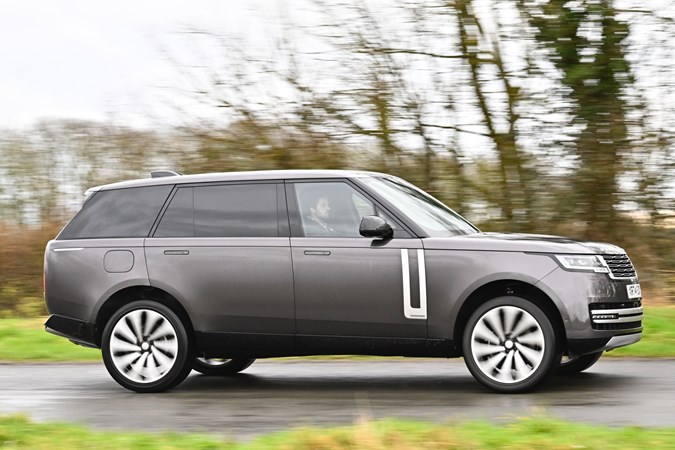
The PHEV system was available in two flavours – P440e and the range-topping 510e. Both systems teamed JLR’s 3.0-litre straight-six Ingenium petrol engine with a large battery pack and a beefy electric motor, and performance was mighty whichever you opted for.
Considering the cars weigh nearly three tons, unladen, that’s impressive. Sadly, performance wasn’t anywhere near as sparkling in electric mode as the motor produced just 141hp. However, Land Rover launched improved P460e and P550e models in 2024 with a 218hp electric motor that should increase poke dramatically. We’ll update this review as soon as we’ve sampled them.
The remarkable thing is how effortlessly the car shuffles between its two power sources. The inline-six petrol engine is so quiet when it’s on that you actually have to look at the rev counter to figure out whether you’re running on petrol or the plug socket. It even sounds good when you rev it – something you couldn’t have said about the previous-generation car with its weedy four-cylinder engine.
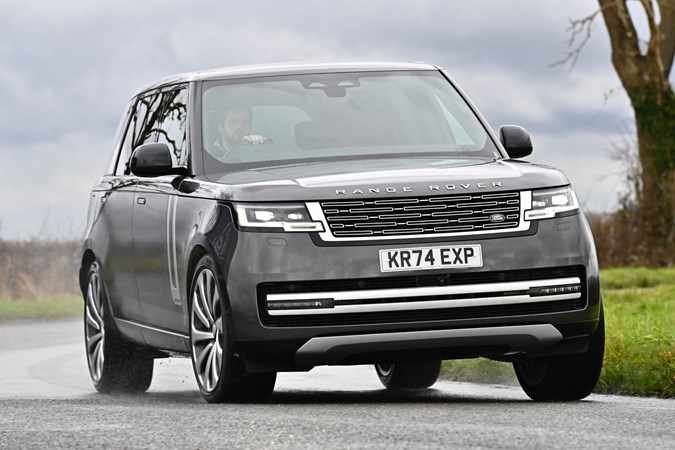
What’s it like to drive?
- Hugely refined and comfortable
- Stunning body control in Dynamic mode
- Ride quality is impressive
Only one word can describe the Range Rover’s driving experience. Effortless. Nothing fazes it. As long as there’s fuel in its tank, it’ll plough through any terrain you point it at, all the while keeping you cocooned in a leather-lined, air-conditioned, eerily quiet sanctuary.
Range Rover has made some significant improvements for this new model, chief of which being the steering system. It isn’t vague or as light as before, which gives you a lot more confidence whether you’re wafting down the motorway or challenging the limits of physics on a twisty back-road. Standard four-wheel steer boosts agility and stability, helping the Range Rover feel more compact than it is.
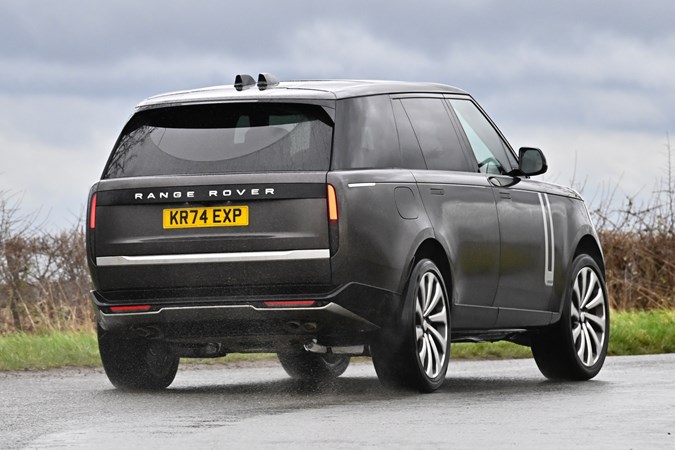
There is a bit of body roll in Comfort mode, but that’s to be expected when you’re driving a car the size and weight of Blenheim Palace. But what’s astonishing is how well the Range Rover controls its bulk when you switch its chassis into Dynamic mode.
Despite lots of clever chassis tech, there is still some bodyroll in corners although it is very much in keeping with the traditional Range Rover feel. Grip levels are high, so it’s possible to comfortably carry plenty of speed down a B-road should you wish. Those after more thrills should look at a Porsche Cayenne or Bentley Bentayga, although cars fitted with the optional Dynamic Response Pro get adaptive anti-roll bars that reduce lean and boost agility.
Its air suspension tightens up enough to stop the body from flopping about, but not so much that you sacrifice the car’s excellent ride quality. The result is that you can carry an obscene amount of speed down a twisty back road – but you never feel in any danger.

Comfort should always be a Range Rover’s priority, and the latest car doesn’t disappoint. It’s delightfully supple, ironing out imperfections incredibly well, especially at speed. In fact, we reckon the Range Rover gets more comfortable, the faster you go.
Potholes and ridges will produce a thud in the cabin, but it’s far from offensive. It’s also much less pronounced than its predecessor and superior to rivals such as the BMW X7 and Mercedes GLS. With very little wind, road or engine noise, it’s a truly excellent long-distance cruiser.
The four-wheel drive system is equally fluent on-road and off it, where its low-range ratios give the Range Rover the kind of loose-surface ability most rivals can only dream of. We tested out the four-wheel drive system on steep, rocky trails which, though not easy, barely scratched the surface of the car’s ability. Rivals would have surely floundered nonetheless, lacking as they do the Rangey’s formidable arsenal of off-road-ready systems.



